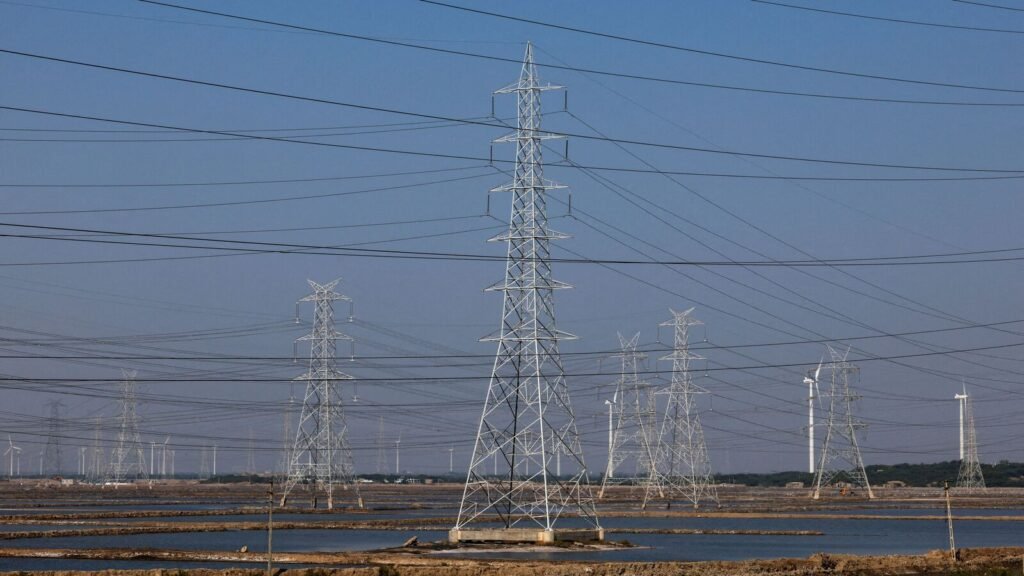“Under the scheme, management control would be transferred to the strategic partner from the private sector and the debt of the discom would be taken over the Centre in a bid to make the transaction attractive for the partner,” said one of the two people mentioned above.
Developed by a group of ministers on fiscal viability of discoms, the proposal gives states three reform paths: privatize majority ownership, divest a limited stake, or list their utilities within three years. Each option links financial support to performance, including access to 50-year interest-free loans and equity grants for grid modernization, the first person added.
The ministers’ panel pegged the total unsustainable debt of the country’s discoms at ₹2,74,120 crore.
The scheme, if approved by the power ministry, would be taken to the Union cabinet for its approval.
The panel, headed by the power minister Manohar Lal, had met last month to look at the viability of discoms and discuss a new reform-based scheme for debt restructuring by the Centre.
The scheme proposed two disinvestment models for discoms: states going for the first option would have to create a new entity and divest at least 51% equity in this company, which will enable them to access a 50-year interest-free loan for the privatized company’s debt through a Special Assistance to States for Capital Investment (SASCI), said the second person cited earlier.
The ministers’ panel estimated a cumulative outlay of ₹78,119 crore from the Centre through the SASCI loans to states.
The Centre will also provide loans with an interest subvention of 3.5% for five years to other discoms in the state, the second person added.
This proposal aims to encourage states to allow private participation in the state and enhance financial viability of the discoms. “It will ensure every state looks at its utility operations and restructures the current entities; lead to emergence of new private operators that will drive innovation and competitiveness,” said Sambitosh Mohapatra, partner and leader, climate and energy at PwC India.
The second option allows a minimum 26% stake sale in the discoms, wherein the management right would be transferred to the strategic partner and the unsustainable debt would be taken over by the state.
In the both the scenarios, the government would provide an equity grant for infrastructure development for a period of five years.
In case the state government does not want a change in the management of the discoms, they would have to list the discoms within three years of the scheme notification and report a net profit for five years after the scheme comes in to get capex support from the government. They would also have to attain and maintain rating of A or above in the Annual PFC Integrated Ratings, released by the state-run Power Finance Corp.
“The scheme is the best to emerge over last two decades with every facet covered—governance, management control, efficient operations and investment in modernization of grid systems, avoiding tariff shocks and customer service,” said Mohapatra of PwC India. “It provides state governments all three options-listing, divestment of majority and limited divestment—given the performance range of utilities.”
The scheme has the potential to transform the value chain in the sector and attract investment to last-mile connectivity, he added.
The renewed push to sell control of public sector discoms and operate them in a public-private partnership mirrors the government’s effort to monetize power utilities and generate value through stake sales or initial public offerings (IPO).
India has about 67 discoms, including 16 run by the private sector in Delhi, Mumbai, Odisha, West Bengal, Gujarat, and Dadra and Nagar Haveli.
Work in progress
Currently, the government of Uttar Pradesh is in the process to privatize two of its discoms. Mint earlier reported that at least eight firms, including Adani Group, Tata Power Ltd and Greenko Group, are eyeing a majority stake in Purvanchal Vidyut Vitran Nigam Ltd (PUVVNL) and Dakshinanchal Vidyut Vitran Nigam Ltd (DVVNL).
In 2020, the Centre had decided to privatize all electricity distribution companies in the Union Territories administered directly by it. CESC won control of the Chandigarh discom, while Torrent Power took control of the Dadra and Nagar Haveli one. The sales were linked to incentives from the Centre, encouraging discoms to seek new investors.
That year, the government had also announced a reform-linked ₹90,000 crore liquidity injection into fund-starved discoms as part of a ₹20 trillion stimulus package to revive the economy.
Odisha was the first state to privatize its power distribution sector into four discoms in 1999. This was followed by Delhi, which privatized three of its discoms in July 2002: BSES Rajdhani Power Ltd, BSES Yamuna Power Ltd and Tata Power Delhi Distribution Ltd.




